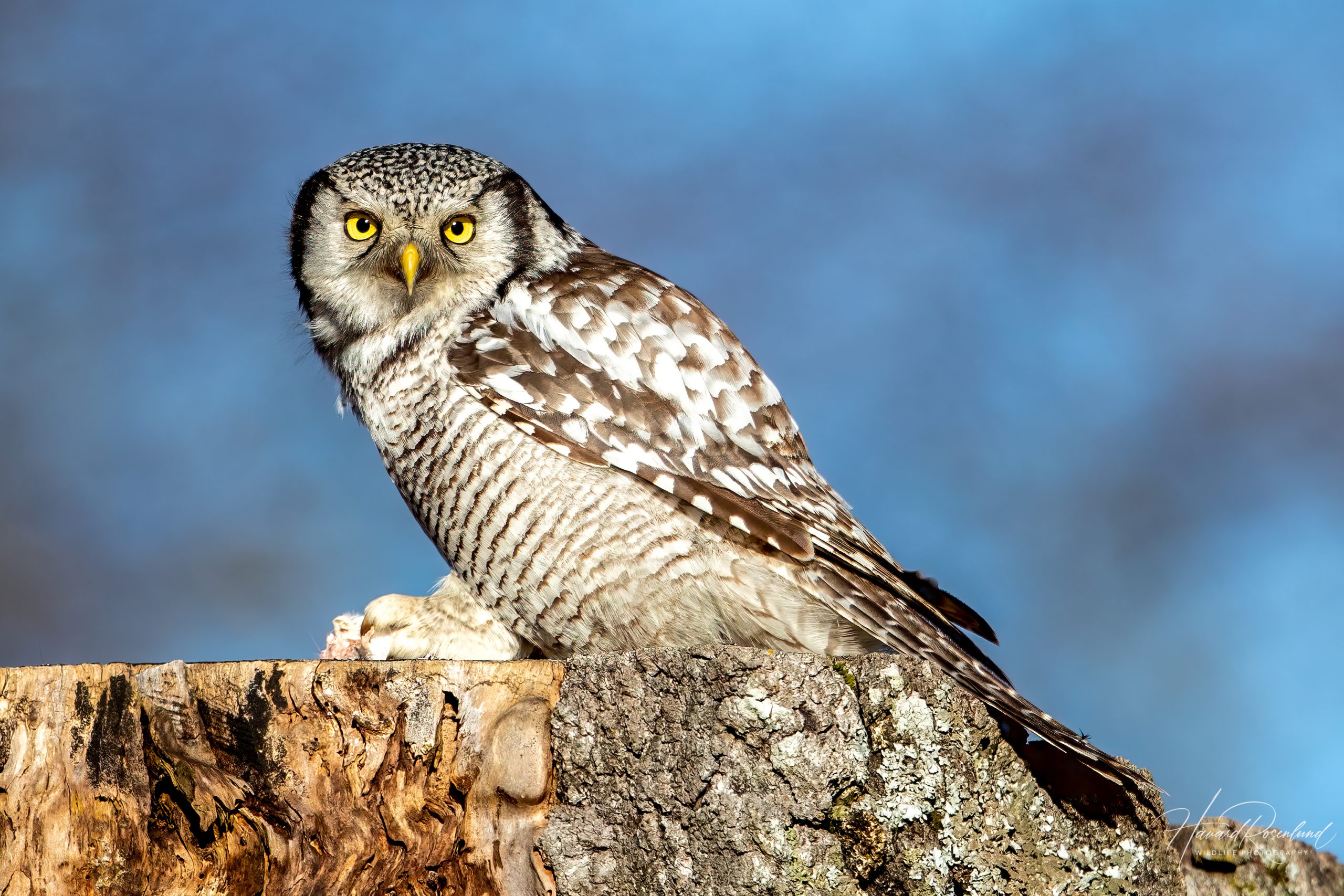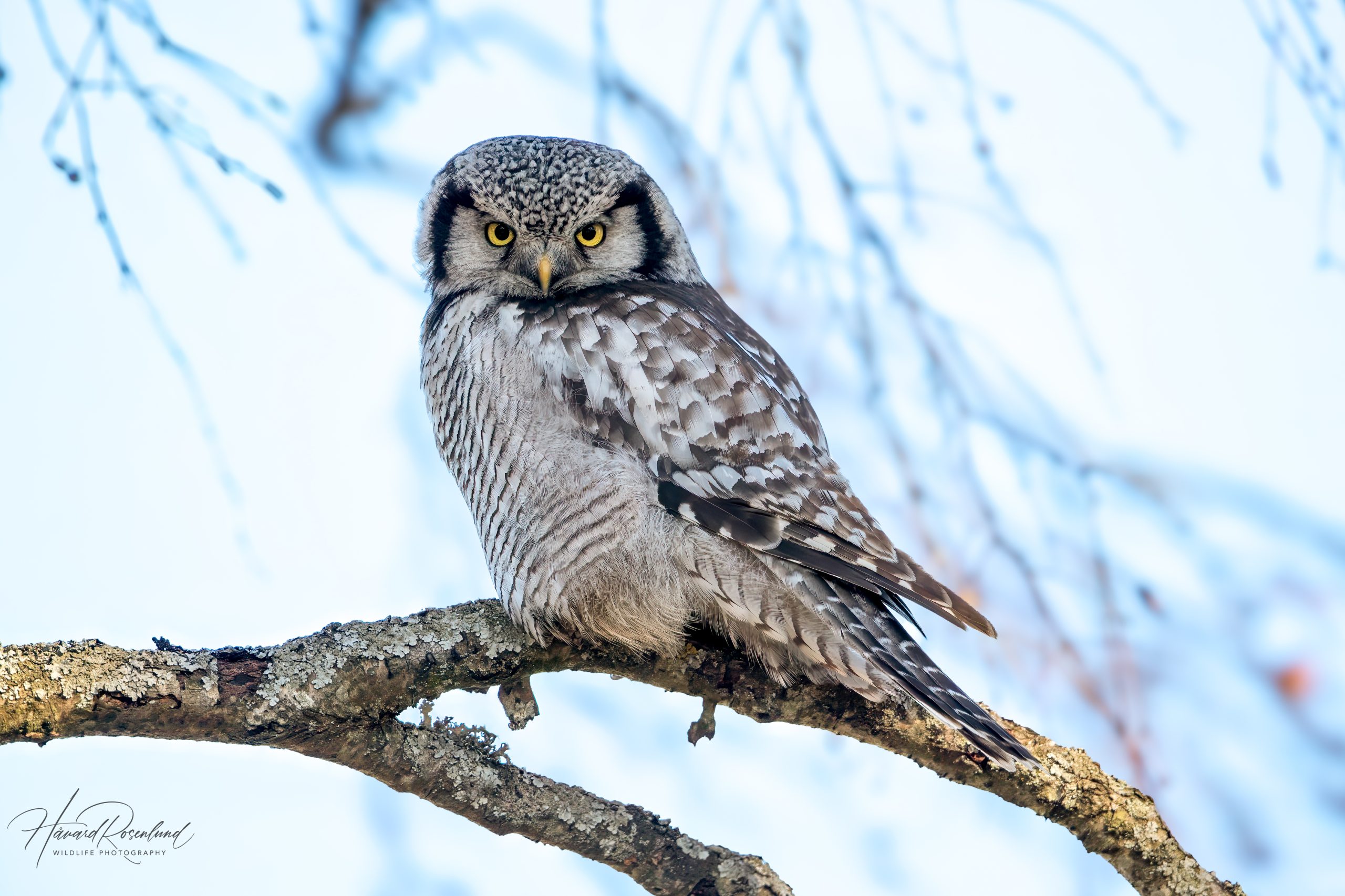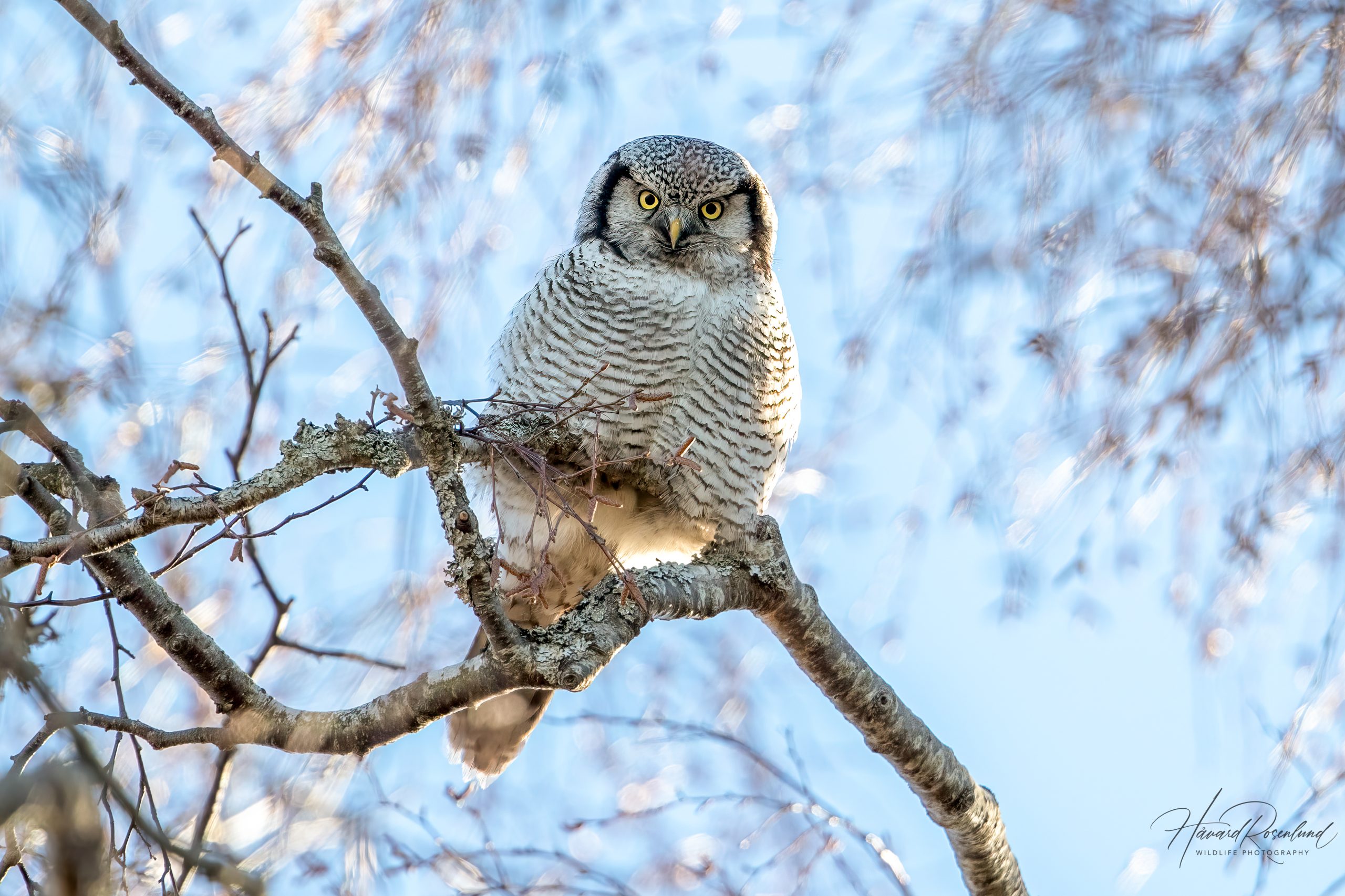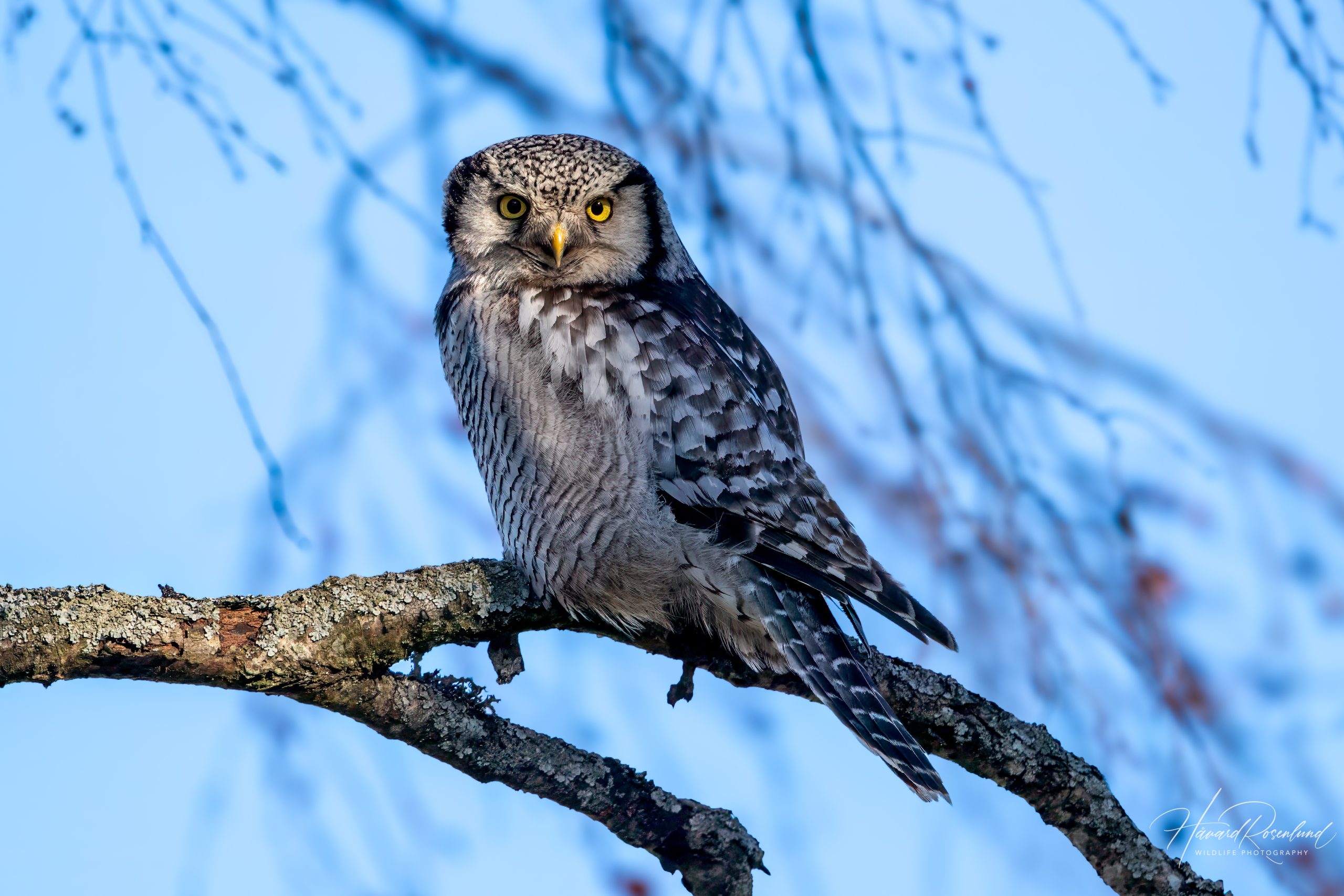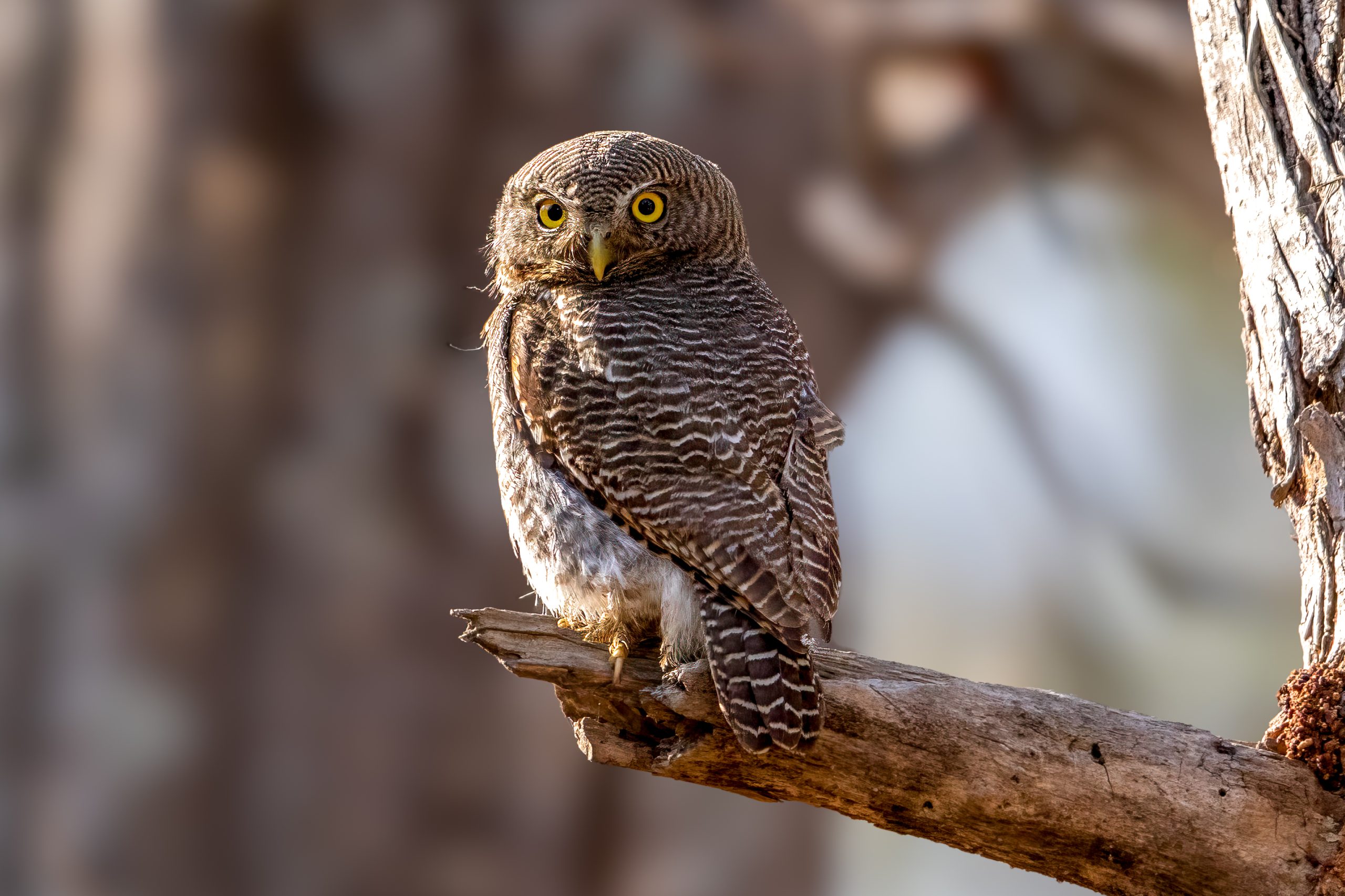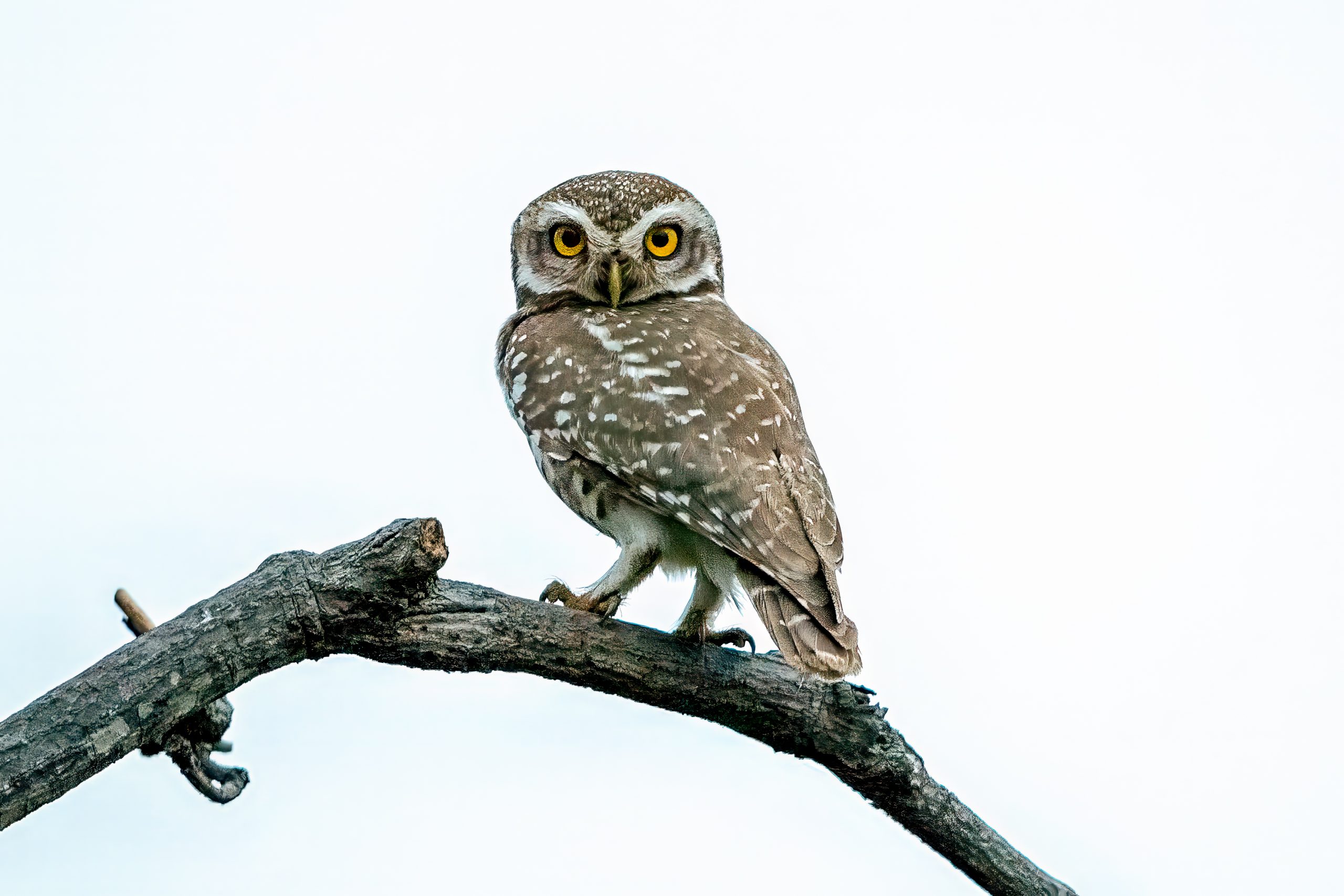Description
The northern hawk-owl (Surnia ulula) is a distinctive and remarkable bird of prey primarily found in boreal forests across the northern parts of North America and Eurasia. Its range extends from Scandinavia across Siberia to Alaska and Canada. This medium-sized owl measures approximately 36-45 cm (14-18 in) in length, with a wingspan ranging from 69 to 82 cm (27-32 in). It is easily recognizable by its long tail and rounded head devoid of ear tufts, giving it a hawk-like appearance. The facial disc is white with dark concentric lines, and it has yellow eyes and a yellow beak. The upperparts are dark brown with white spots, while the underparts are whitish with brown streaks. Unlike many other owls, it is diurnal, meaning it is active during the day, which helps differentiate it from other nocturnal owl species.
Diet & habitat
The northern hawk-owl inhabits open coniferous or mixed forests, often near clearings, wetlands, or bogs. It prefers areas with scattered trees and a mix of young and mature forests, which provide ample hunting opportunities and nesting sites. Its diet primarily consists of small mammals, such as voles, lemmings, and squirrels, supplemented by birds, including grouse and songbirds. This owl hunts primarily by sight and sound, using its keen vision to spot prey from a perch before swooping down silently to capture it. It may also hover or glide to catch prey on the ground.
Behavior
Northern hawk-owls are known for their solitary nature, typically only coming together during the breeding season. They are highly territorial and will aggressively defend their territory from intruders. Their flight is swift and direct, resembling that of a hawk more than an owl, which is a unique adaptation for hunting in open areas in daytime. These owls are known for their vocalizations, which include a variety of whistles, trills, and calls used to communicate with mates and declare territory.
Nesting
The breeding season for northern hawk-owls typically occurs from March to May. They do not construct their own nests but instead use natural tree cavities, abandoned woodpecker holes, or even nest boxes. The female lays a clutch of 5-13 eggs, which she incubates for about 25-30 days while the male provides food. Once hatched, the owlets are cared for by both parents. The young fledge approximately 25-35 days after hatching but remain dependent on their parents for food and protection for several weeks thereafter.
Status
The northern hawk-owl is currently listed as least concern by the IUCN, indicating that it is not immediately threatened. However, its population is subject to fluctuations due to changes in prey availability and habitat loss. Deforestation and climate change pose potential threats to its habitat, which could impact its population in the future.




